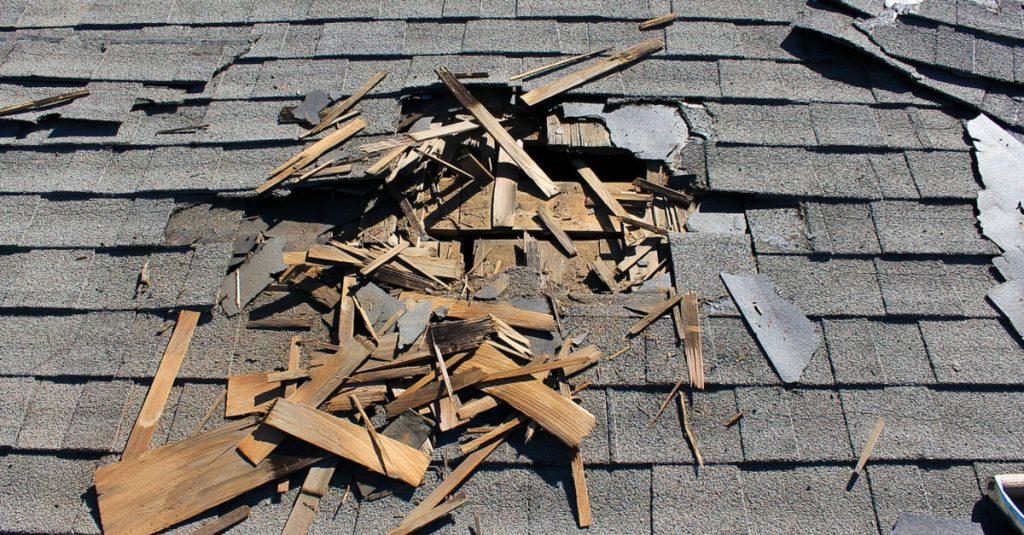Your home’s roof is its first line of defense against the elements, and when roof shingles start coming off, it can be a cause for concern. A damaged or deteriorating roof can lead to leaks, structural problems, and even compromise the safety of your home. In this article, we’ll explore the causes behind roof shingles coming off, the potential risks involved, and the solutions to address this issue.

What Causes Roof Shingles to Come Off?
Age and Wear and Tear
One of the most common reasons for roof shingles coming off is the natural aging process. Over time, exposure to the sun, rain, wind, and temperature fluctuations can cause roofing materials to deteriorate. Shingles can become brittle, lose their adhesive properties, and eventually, start coming off.
Improper Installation
Another frequent cause of shingles coming off is improper installation. If the shingles were not correctly secured during the initial installation, they may not withstand the stresses of wind and weather. It’s crucial to hire experienced professionals for roofing installations to minimize this risk.
Severe Weather Conditions
Extreme weather conditions, such as strong winds, heavy rain, or hailstorms, can damage roofing materials and cause shingles to come off. It’s essential to inspect your roof after severe weather events to identify and address any damage promptly.
The Risks of Roof Shingles Coming Off
Leakage
When shingles come off, it creates openings in your roof. These openings can allow water to infiltrate your home, leading to leaks and water damage. Over time, this moisture intrusion can lead to mold growth and structural issues.
Reduced Energy Efficiency
Missing shingles can also affect the energy efficiency of your home. Your roof plays a significant role in insulating your house. Gaps created by missing shingles can result in heat loss during the winter and heat gain during the summer, leading to higher energy bills.
Structural Damage
If the problem of shingles coming off is not addressed promptly, it can lead to more extensive structural damage. Moisture infiltration can weaken the roof’s underlying structure, potentially requiring costly repairs.
Solutions for Roof Shingles Coming Off
Roof Inspection
If you suspect that shingles are coming off your roof, the first step is to conduct a thorough roof inspection. This inspection can be done by a professional roofing contractor or by you if you feel comfortable doing so safely. Look for missing shingles, damaged areas, and signs of water damage in your attic or ceiling.
Shingle Replacement
If the issue is isolated to a few missing or damaged shingles, you can opt for shingle replacement. It’s crucial to use the same type and color of shingles to maintain the uniform appearance of your roof.
Roof Repair or Replacement
In cases where a significant portion of your roof is affected, it may be more cost-effective and practical to consider a roof repair or replacement. A roofing professional can assess the extent of the damage and provide recommendations based on your specific situation.
Regular Maintenance
To prevent future issues with shingles coming off, consider regular roof maintenance. This includes cleaning debris from your roof, checking for signs of wear and tear, and addressing any problems promptly.
Conclusion
Roof shingles coming off is a common roofing issue that should not be ignored. Prompt action is essential to prevent further damage to your home. Whether it’s through shingle replacement, roof repair, or a full roof replacement, addressing this issue is crucial for the long-term health and integrity of your home. Regular roof maintenance and inspections can help identify problems early, allowing you to take action before they become major concerns. Remember, your roof is an investment in your home’s safety and comfort, so it’s worth taking care of.



Leave a Reply